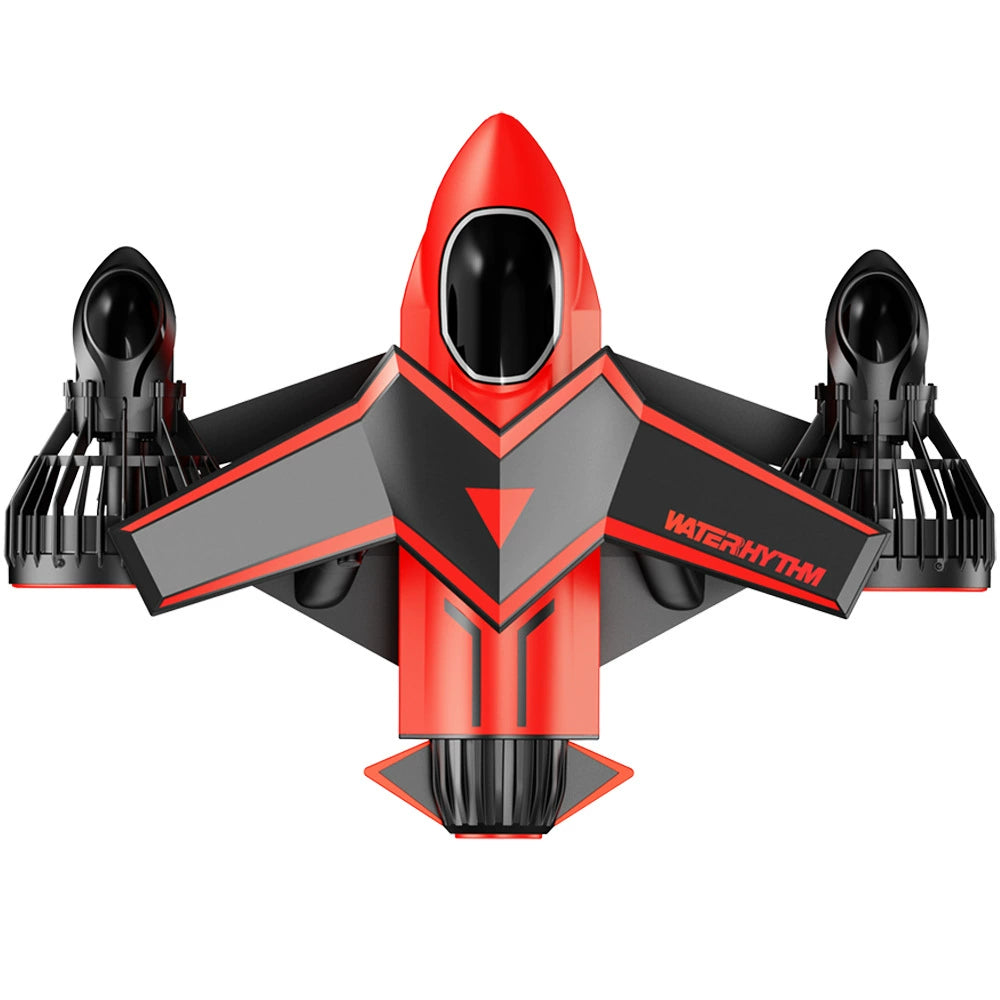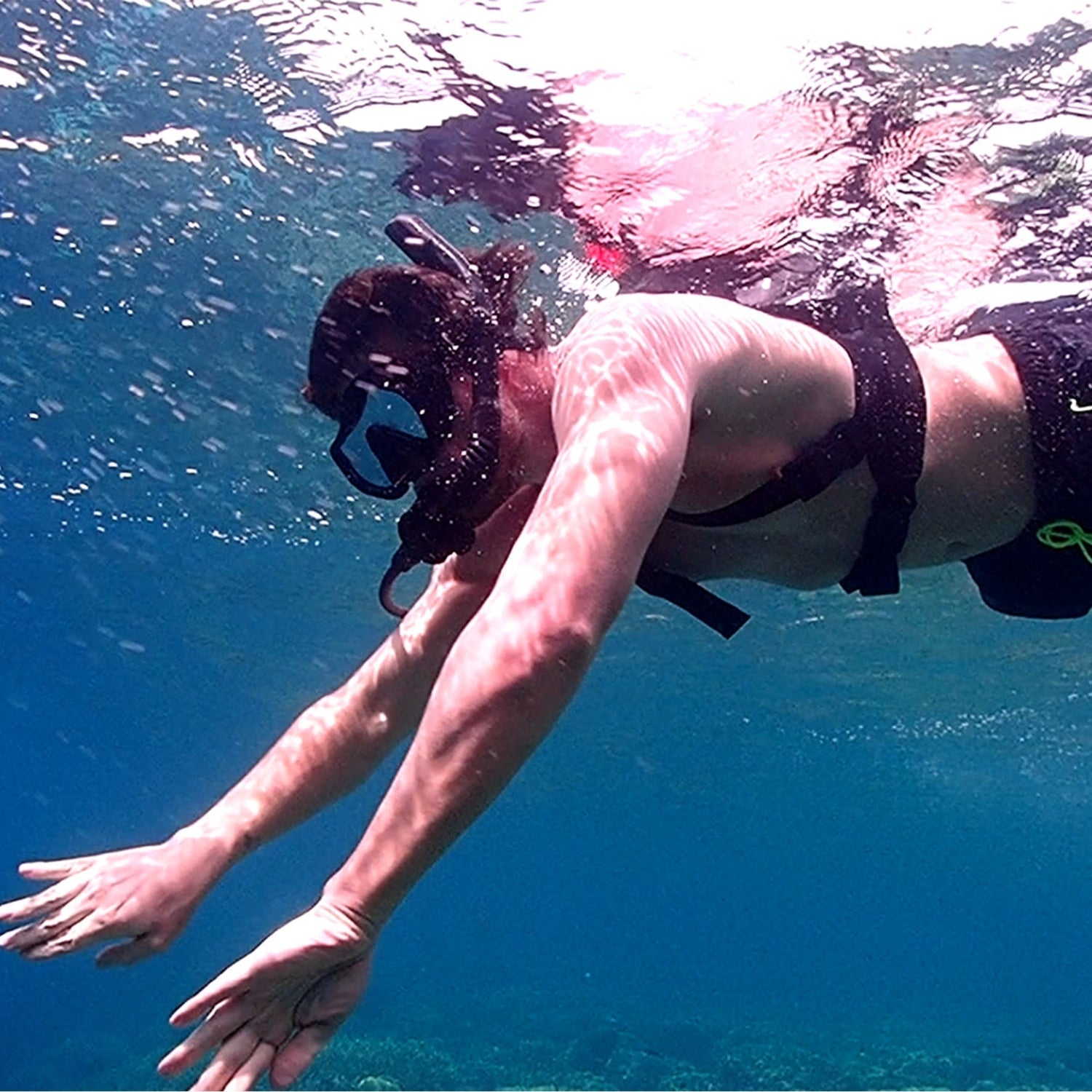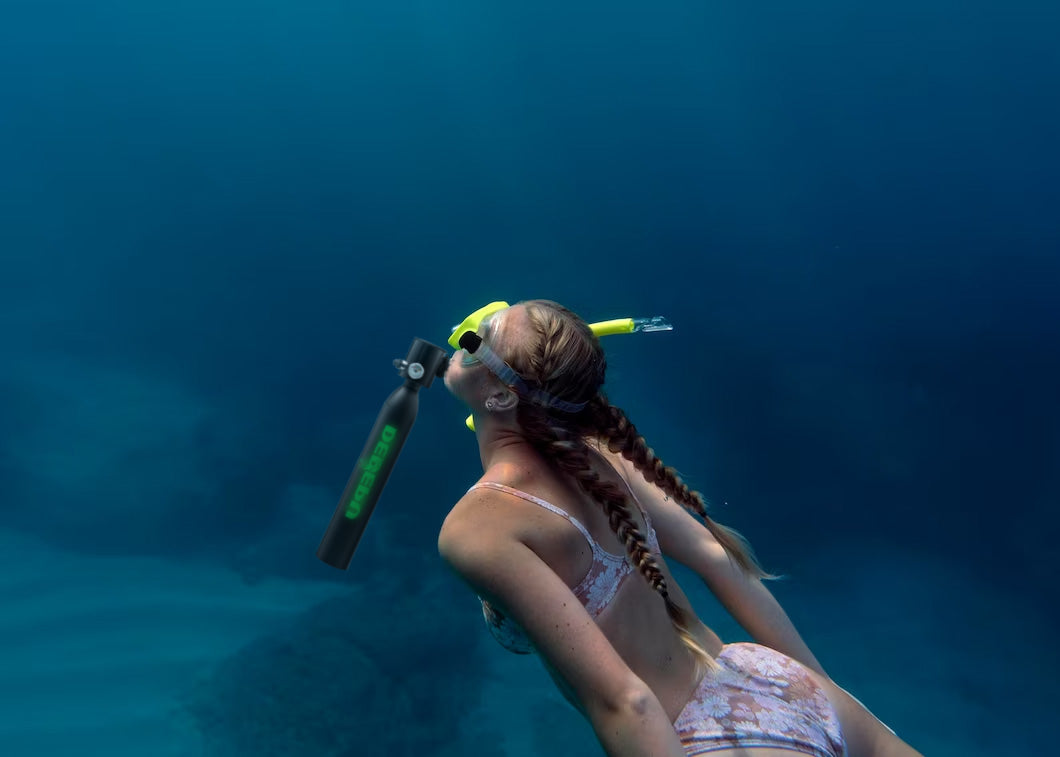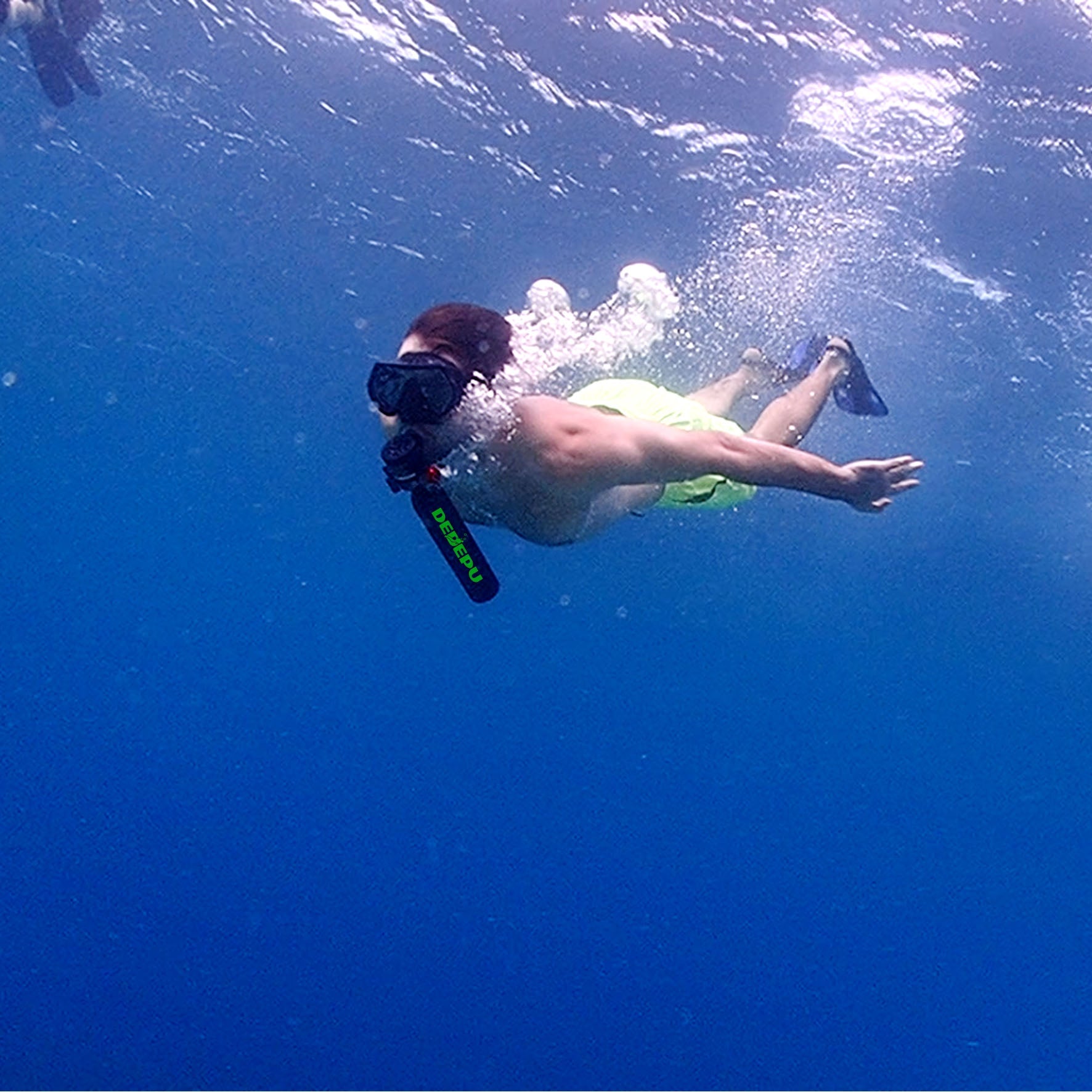Standard compressed air, containing approximately 21% oxygen, is the most common and economical choice for depths generally above 130 feet (40 meters). Many divers choose enriched air nitrox, typically with mixes like 32% or 36% oxygen, for its key benefit: longer allowable bottom times at common dive depths by reducing nitrogen absorption. Regardless of the gas used, tanks must be filled to a specific recommended pressure (typically 3000 psi / 200 bar) using specialized, filtered compressors that remove contaminants like moisture and oil vapor.
Why Compressed Air is the Go-To Choice
A standard scuba tank (the common aluminum 80-cubic-foot or steel 12-liter size) is filled to 200 bar (3,000 psi) pressure with regular air. This air mirrors what we breathe on the surface: approximately 78% nitrogen (N₂) and 21% oxygen (O₂), with trace gases like argon making up the final 1%.
For dives shallower than 40 meters (130 feet) – where ~95% of recreational dives occur – air is perfectly adequate. The cost per fill? Typically between 5 to 15 USD for an aluminum 80, far cheaper than enriched alternatives. Filling happens via industrial compressors pulling ambient air through 3-stage filtration systems that remove moisture, oil vapor, and particulates down to 0.01 microns. Filters must be changed every 50-200 hours of operation to maintain air purity to ISO 8573-1 Class 1 standards. Temperature matters too: Tanks heat to ~50-70°C (122-158°F) during fills but must cool to ambient before pressure stabilizes at 200 bar ±10 bar.
Why Air Dominates Recreational Diving
The math is straightforward. Air fills leverage existing atmospheric composition, eliminating the need for costly oxygen blending systems. Dive shops require compressors costing 8,000-20,000 USD – a fraction of the 25,000-60,000+ investment for Nitrox membrane systems. For divers, air keeps costs low: A week of daily dives averages ~$35-105 USD in fill fees.
Performance & Limitations
While simple, air imposes hard limits. Below 30 meters (100 feet), nitrogen narcosis risk increases, with studies showing ~50% of divers experience mild impairment at 30m, rising to ~80% at 40m. Oxygen partial pressure (PO₂) also climbs with depth; at 56 meters (184 feet) on air, PO₂ hits 1.4 bar, the recreational maximum to avoid CNS toxicity.
Filtration: Non-Negotiable Safety
Every breathable fill must pass O₂-compatible oil-free compressors and filters trapping:
Water aerosols to <0.003 g/m³
Hydrocarbons to <0.003 mg/m³
Carbon monoxide (CO) to <3 ppm
Routine testing via gas chromatography verifies CO stays below 10 ppm (EN 12021 limit). Tank valve O-rings degrade at ~7-10 years, requiring replacement to prevent leaks.
Best for: Single-tank shore dives <25m (82 feet), multi-day trips with 3+ dives daily, or training dives in warm water (e.g., 79°F/26°C+), where metabolic oxygen demand is lower.
Avoid if: Diving deeper than 30m, performing complex tasks, or with bottom times exceeding 50 mins at 18m (60 feet). Air’s ~21% O₂ won’t extend no-deco limits like Nitrox 32% (gaining ~15% time at 18m).

Why Compressed Air is the Go-To Choice
Industry surveys confirming over 95% of leisure divers use standard air fills for their simplicity and universal compatibility. Filling a common aluminum 80-cubic-foot (11.1-liter water capacity) tank to the standard pressure of 3,000 psi (200 bar) replicates surface air composition: precisely 78.08% nitrogen (N₂) and 20.95% oxygen (O₂), alongside trace gases like argon and carbon dioxide totaling less than 1% of the mixture. This consistency is achievable only through industrial-grade oil-free compressors that incorporate three-stage filtration systems to strip contaminants down to >0.01 microns—removing water vapor to <0.3 grams per cubic meter, hydrocarbons below 0.1 mg/m³, and carbon monoxide (CO) to <2 parts per million (ppm), while adhering to the ISO 8573-1 Class 1 purity standard, which mandates microscopic particle counts below 0.1 particles per liter at the 0.1–0.5 micron threshold, ensuring no detectable odors or toxic elements survive compression.
Filling an aluminum 80 tank averages 6–16 USD per session, influenced by regional electricity rates averaging 0.12–0.36 per kWh and compressor maintenance cycles requiring 1,200–3,500 annually for diaphragm replacements and valve rebuilds every 800–1,200 operating hours, whereas specialized Nitrox fills incur 12–25 per tank due to 18,000–$65,000 blending equipment and pristine stainless-steel pipelines needed for high-purity oxygen handling. Beyond expense, air supports most recreational profiles: For dives within the 40-meter (130-foot) safety envelope—where >85% of certified divers operate—the nitrogen partial pressure (Pn₂) stays at 3.12 bar (with oxygen partial pressure (PO₂) = 0.84 bar) at the max recreational depth, keeping narcosis symptoms manageable for >75% of individuals according to Naval dive trials. The physical properties also aid safety: Tanks heat to 50–70°C (122–158°F) during rapid fills but contract to stable pressures within ±10 bar once cooled to ambient seawater temperatures near 10–30°C (50–86°F), and the inherent 20.95% oxygen concentration maintains combustion resistance at levels >300% lower than Nitrox 40 blends, minimizing flammability risks during fills.
Dive centers require only 8,500–22,000 piston compressors with air-cooled 7.5–10 kW motors and moisture separators capable of processing 4–9 cubic feet per minute (CFM), filling a standard tank in 12–15 minutes, whereas Nitrox infrastructure demands oxygen-compatible seals (Viton™ or Teflon™ at 120–350 per valve kit) and quarterly gas chromatograph testing (150–400 per analysis). While air’s nitrogen load restricts no-decompression limits to ~50 minutes at 18 meters (60 feet)—compared to Nitrox 32’s 68 minutes—its universal calibration simplifies regulator and computer function, using standardized O₂ toxicity algorithms preset to 21% concentrations and avoiding the mandatory ±1% oxygen analyzer verification required for enriched fills, streamlining predive checks for both novices and guides leading 15–25 diver groups weekly. The lifecycle of a well-maintained tank aligns with its fill standard: Visual inspections every 24 months and hydrostatic testing every 5 years detect metal fatigue or corrosion rates exceeding 0.1 mm/year, and valves with brass bodies and chrome-plated stems withstand 5,000–7,000 fill cycles before seal degradation compromises performance—reinforcing why compressed air anchors recreational diving’s reliability matrix.
Benefits and Common Mixes (Like 32%)
By blending 22% to 40% oxygen into standard air, divers reduce nitrogen absorption and extend bottom times. For example, EAN32 (a common recreational mix) replaces 7% nitrogen with extra oxygen, slashing decompression obligations and fatigue. In real terms: At 18 meters (60 feet), divers gain ~15–20 minutes extra bottom time compared to air, elevating a 50-minute limit to 68+ minutes. This efficiency compounds on multi-dive days: A diver completing three dives to 20m (65ft) on EAN32 accumulates ~25–30% less residual nitrogen, reducing surface intervals by 40–60 minutes. The tradeoff? Oxygen toxicity management requires strict depth control: EAN32’s Maximum Operating Depth (MOD) is 34 meters (112 feet) at a partial pressure limit of 1.4 bar, versus air’s 56m (184ft) limit.
How Nitrox Extends Dive Time: Nitrogen Numbers
At 18 meters, air exposes divers to a nitrogen partial pressure (Pn₂) of 2.48 bar, consuming allowable nitrogen capacity at ~12% per minute. With EAN32—containing 68% nitrogen versus air’s 78%—Pn₂ drops to 2.14 bar, reducing nitrogen absorption to ~10%/minute. This ~17% reduction directly translates to a longer no-decompression limit (NDL). According to NOAA dive tables, EAN32 extends NDLs by 22 minutes at 18m and 49 minutes at 9m (30ft). For divers completing 20 dives annually, switching to EAN32 can add ~4–6 hours of cumulative bottom time per year without increasing decompression sickness risk, validated by DAN incident reports showing <0.5% DCS occurrence in EAN dives <30m.
Blending Methods: Technology vs. Cost
Two primary methods create Nitrox:
Partial Pressure Blending: Injects pure oxygen (>99.5% O₂) into air-filled tanks via decanting pumps. Costs 18,000–22,000 USD for a blending station, plus $500/year upkeep. Achieves mix accuracy within ±0.5%, critical for technical protocols.
Continuous Flow Membrane Systems: Filters nitrogen using semi-permeable fibers, outputting EAN28–EAN40 mixes directly. Units cost 55,000–65,000 USD but deliver fill volumes of >50 tanks/hour with <±1% variance.
Fill costs reflect infrastructure: 16–25 per tank versus air’s 5–15, due to oxygen procurement (15–35/gallon industrial liquid O₂) and 0.09–0.21/kWh power for blending pumps. Filter replacements every 3 months add 200–$400 per unit to prevent hydrocarbon contamination.
Common Mixes: Precision & Limits
| Mix | O₂% | Max Depth (at 1.4 PO₂) | Bottom Time Gain at 18m |
|---|---|---|---|
| EAN32 | 32% | 34m (112ft) | +18 mins vs. air |
| EAN36 | 36% | 29m (95ft) | +24 mins vs. air |
| EAN28 | 28% | 40m (131ft) | +10 mins vs. air |
Mixes above 40% require specialized operator training (Trimix certifications), while <28% offer minimal gas efficiency gains. For tropical diving at <24m (79ft), EAN32 dominates ~75% of recreational Nitrox use due to its balance of depth flexibility and time extension.
Digital sensors require ±1% calibration tolerance; failure risks oxygen toxicity if actual O₂ exceeds 40%. Analysers cost 600–1,100/unit with annual 140 calibration fees. Tanks must use oxygen-compatible components: Viton™ valve seals (120–$250) rated for >40% O₂, and clean internal surfaces with humidity <−65°C dew point to prevent combustion. Visual inspections occur every 12 months (vs. 24 months for air-only tanks).
For a 25 Nitrox fill, a recreational diver gains ~3.50/minute of extra bottom time value (based on average 245/day boat fees). This efficiency peaks on shallow reefs: On a Bonaire trip (5 dive days, avg. depth 15m), EAN32 reduces surface intervals by ~1.5 hours/day, enabling 4–5 dives daily instead of 3–4. Factoring fill markup, the breakeven point occurs at >6 dives annually, assuming 20/saved surface interval hour in productivity.
Operational Standards
EN 144-3:2016: Permitted O₂ variance ±0.5%
DAN Nitrox Guidelines: <1.6 bar PO₂ for conservative diving
CGA G-10.1: Moisture limit 0.003 g/m³ for high-oxygen blends
The Filling Process
Industrial oil-free compressors (like Bauer or Coltri models) with 7.5–15 kW motors draw ambient air through multi-stage filtration systems, processing 4–9 cubic feet per minute (CFM) to fill a standard aluminum 80 (11.1L) tank in 12–18 minutes. The air undergoes three critical treatments: Particulate filters capture dust down to 0.01 microns, coalescing filters remove oil aerosols to <0.003 mg/m³, and activated carbon beds adsorb carbon monoxide (CO) to <2 ppm, ensuring compliance with EN 12021:2014 breathable air standards. Tanks enter the fill station at ambient pressure (1 bar) and exit at 200 bar (3,000 psi) ±10 bar tolerance, but heat generated during compression spikes internal temperatures to 50–70°C (122–158°F), requiring 30–45 minutes of cooling before pressure stabilizes.
Air Intake & Pre-Filtration:
Positioned ≥3 meters (10 ft) from exhaust sources to avoid CO contamination.
5–25 μm particulate pre-filters capture airborne debris, changed every 50–100 operating hours at 15–35 per filter.
Compression Stages:
3–4 piston stages incrementally boost pressure:
Stage 1: 1 bar → 5 bar
Stage 2: 5 bar → 30 bar
Stage 3: 30 bar → 200+ bar
Intercoolers reduce air temperature between stages by 20–40°C (36–72°F).
Post-Compression Filtration:
High-pressure coalescers trap oil/water aerosols to 0.003 g/m³ at 200 bar.
Molecular sieve desiccants achieve −40°C dew point (ISO 8573 Class 2).
Catalytic converters convert CO to CO₂ if sensors detect >5 ppm.
Fill Station Hardware:
Stainless steel whips rated for 300 bar working pressure.
Thermal expansion relief valves activate at 110°C (230°F).
Digital pressure gauges with ±1% accuracy and auto-shutoff at 207 bar.
Safety Steps: Non-Negotiable Protocols
Pre-Fill Inspection:
Check hydrostatic test date (must be <5 years old).
Verify visual inspection sticker (<12 months old for Nitrox tanks).
Inspect valve threads for damage; torque specs: 30–40 Nm (22–30 ft-lb).
During Filling:
Monitor tank temperature with infrared thermometers; abort if exceeding 80°C (176°F).
Use burst discs rated at 1.5× service pressure (330 bar for 200-bar tanks).
Post-Fill Verification:
Cool tank to <35°C (95°F) before final pressure check.
Test gas purity via portable analyzers (CO <10 ppm, O₂ 20.8–22.0% for air).
Label tanks with fill pressure (±5% accuracy), gas mix, and date.
Cost & Maintenance Economics
Compressor Capital Cost: 8,500–22,000 USD for a 10 CFM oil-free unit.
Operating Costs:
Electricity: 0.50–1.20 per fill (at $0.14/kWh, 15-minute fill).
Filter replacements: 800–2,200/year (particulate + coalescer + carbon).
Annual servicing: 1,200–3,500 for valve kits and seal rebuilds.
Failure Risks:
Moisture contamination accelerates tank corrosion (>0.1 mm/year pitting).
CO levels >10 ppm cause headaches in >60% of divers within 20 minutes.
Real-World Efficiency Metrics
A dive shop filling 40 tanks/day requires compressor duty cycles of 50% (6 hours runtime) to prevent overheating.
Automated fill banks with 6–12 stations reduce fill time to 8–12 minutes/tank via parallel processing.
Fill logs document pressure, temperature, and operator ID for each tank—critical for liability coverage.
Tank Maintenance
A scuba tank's structural integrity and operational safety hinge on rigorously documented maintenance protocols, with industry failure analysis indicating that >80% of catastrophic tank ruptures directly correlate with lapsed inspection schedules or undetected internal corrosion progressing at 0.08–0.35 mm/year in aluminum alloys, particularly in saltwater environments where chloride ion concentration exceeds >500 ppm and accelerates pitting corrosion by ~300% compared to freshwater exposure. Regulatory mandates require annual visual inspections (VIP) conducted by certified technicians using calibrated tools: Internal surfaces undergo scrutiny via >200-lumen borescopes capable of resolving defects as small as 0.1 mm width and 0.05 mm depth, with rejection criteria triggered if any of the following are observed—(a) intergranular cracks measuring >3 mm in length radiating from neck threads, (b) corrosion pits deeper than 10% of minimum wall thickness (typically 1.5 mm for standard 11.5 mm-thick aluminum 80 tanks), or (c) lining delamination covering >25% of the internal surface area, all quantified against the PSI-PCI VIP reference standard that tolerates no more than 1 defect per 25 cm² in critical stress zones.
Hydrostatic retesting every 5 years subjects tanks to a water-jacket volumetric expansion test where the vessel is submerged and pressurized to 333 bar (150% of 200-bar working pressure), with permanent expansion continuously monitored; failure occurs if elastic expansion exceeds 10% total volume (e.g., >1.15 liters in a standard 11.1L tank) or reveals a pressure drop of >5 bar/min at maximum load, indicating metal fatigue or micro-fractures compromising the cylinder's ability to safely contain 2.2 million joules of stored energy at full charge. For high-use commercial tanks sustaining >500 annual fill cycles, supplementary ultrasonic thickness mapping becomes mandatory, deploying 5 MHz transducers at 50-mm grid intervals to detect localized thinning below 8.9 mm in steel or 10.2 mm in aluminum, thresholds below which stress concentration factors rise exponentially, reducing burst pressure tolerance by 40–60% according to ASME Section VIII fracture mechanics models.
Valve integrity dictates gas delivery reliability, where brass DIN outlets require torque calibration to 32±2 Nm during installation to prevent thread stripping of the 18-TPI neck engagement, while internal components demand meticulous attention: Viton™ O-rings (Shore A hardness 75±5) sealing high-pressure seats degrade after 7 years or 300 thermal cycles (from ambient to 70°C fill temperatures), losing elasticity and permitting leakage rates up to 0.5 L/min at 200 bar, necessitating replacement kits costing 18–45 per valve. Critical safety components like thermal-activated pressure relief devices (TPRDs) must rupture within 1 ms at 330±15 bar to prevent overpressure explosions, verified annually via proof-pressure testing at 250 bar for 30 minutes while monitoring deformation with 0.01 mm-resolution strain gauges; discs showing micro-cracks or corrosion pitting >0.05 mm deep increase failure probability from a baseline of 0.1% to >12% and require immediate replacement. Adjustable first-stage seats regulating intermediate pressure to 9±0.5 bar undergo calibration drift after 1,200 breathing cycles due to spring fatigue, measured using digital manometers with 0.1 bar accuracy to ensure second-stage delivery pressure stays within the 1.0–1.4 bar range for optimized airflow during inhalation.
A single hydro test failure forces tank condemnation, incurring 230–600 replacement costs, whereas undetected valve seat erosion causing free-flow at depth wastes >40 bar/min gas and elevates drowning risks by ~60% in rescue simulations. Proactive upkeep economics remain compelling—28 annual VIP + 70 quinquennial hydro versus $1,200+ incident liability claims—validated by DAN insurance statistics showing 92% of tank-related accidents occur in cylinders older than 8 years with incomplete service records.

Key Points for Divers
Industry analyses revealing that >65% of gas-related dive incidents stem from misread labels or unverified pressure data, where even a ±10 bar deviation from expected fill levels can reduce bottom time by >8 minutes at 18 meters and elevate decompression sickness risk by ~15% due to inaccurate gas planning. Every tank must display standardized markings: Working Pressure (e.g., "200 bar" or "3000 psi") stamped within ±5% tolerance, Current Hydrostatic Test Date (e.g., "★24" for June 2024), and gas mixture identifiers like "AIR" for 21±1% O₂ or "EAN32" for 32±0.5% O₂, alongside tamper-proof O₂ analysis stickers verifying measured oxygen concentration within 0.5% error margins, with omissions or illegible markings disqualifying ~12% of inspected tanks annually per PSI-PCI audits.
Decoding Tank Markings
Permanent engravings on tank shoulders mandate alphanumeric codes specifying:
DOT-3AA/ISO 9809 certification indicating steel construction tested to 667 bar burst pressure,
Service Pressure (e.g., "207 BAR") representing the maximum safe fill at 21°C ambient temperature,
Manufacturer Serial (e.g., "LUXF 45682") traceable to original heat-treatment batches,
Current Hydro Test Date ("♢ 9 24" for September 2024), where expired tests (>5 years old) invalidate the cylinder for use,
Magnetic Particle Inspection Marks ("★") for aluminum tanks proving freedom from stress cracks.
Complementing these, non-permanent adhesive labels must include:
Gas Composition (%O₂/%He/%N₂) with analyzer certification (±1% accuracy),
Fill Station ID & Operator Initials,
Actual Fill Pressure (e.g., "194 bar" measured post-cooling at 25°C),
Maximum Operating Depth (MOD) warnings like "NITROX 32 MAX 34m" calculated at 1.4 bar PO₂ limit.
Pressure-temperature dynamics directly impact gas volume: A tank filled to 200 bar at 45°C cools to ~182 bar at 15°C seawater temperature, representing a 9% pressure drop that consumes ~140 L of gas from an 11L cylinder—equivalent to >5 minutes at 10m depth—necessitating post-cooling verification with ±1 bar resolution digital gauges before diving. Misinterpretations compound risks: Divers misreading a 190 bar post-cooling fill as "full" assume 2,470 L available gas but actually carry only 2,090 L, resulting in a 15.4% volume deficit that shortens contingency reserves by ~3 minutes during emergency ascents from 30m.
Pressure Validation Techniques & Tools
Predive gauge cross-checks require:
Zeroing analog needle gauges against 1 bar atmospheric pressure to offset ±5 bar mechanical drift,
Comparing tank pressure to dive computer readings using Bluetooth transmitters (e.g., Shearwater PPS-C) with 0.25% FS accuracy,
Verifying intermediate pressure at regulators via port plug manometers confirming 9.0±0.5 bar output for first-stage valves. Field studies show 37% of rental tanks exhibit >10 bar gauge deviation, with 6% exceeding 20 bar error—prompting mandatory calibration every 18 months at $45–80/unit. Underwater pressure monitoring follows linear decay: Air consumption rates of 20 L/min at 20m reduce pressure by ~15 bar/min in aluminum 80s, demanding gas checks every 50 bar/20 bar intervals in recreational/technical dives respectively.
Critical Label Compliance Failures & Consequences
| Defect | Frequency | Consequence |
|---|---|---|
| Illegible Hydro Date | 28% of rented tanks | Voided insurance; 8.5× higher legal liability |
| Missing O₂ Sticker | 15% of Nitrox fills | Risk of diving EAN32 at MOD 40m (PO₂=1.6 bar) |
| Overfill >+10% (220 bar) | ~5% of fills | Burst disc failure probability ↑300% |
| Label-Vs-Analyzer O₂ Mismatch | 3.2% of enriched tanks | CNS toxicity risk at 1.5+ bar PO₂ |
Gas consumption calculations depend on labeled volume: A steel 15L tank stamped "232 bar" contains 3,480 L total, allowing a 42-minute NDL dive to 20m at 25 L/min RMV, whereas an identical tank labeled "200 bar" permits just 35 minutes—a 16.7% duration reduction. Financial safeguards reinforce vigilance: Dive operators documenting 3+ label violations weekly face $5,000–15,000 USD regulatory fines, while divers confirming fill discrepancies pre-dive secure 100% refunds under industry service codes.





Leave a comment
All comments are moderated before being published.
This site is protected by hCaptcha and the hCaptcha Privacy Policy and Terms of Service apply.